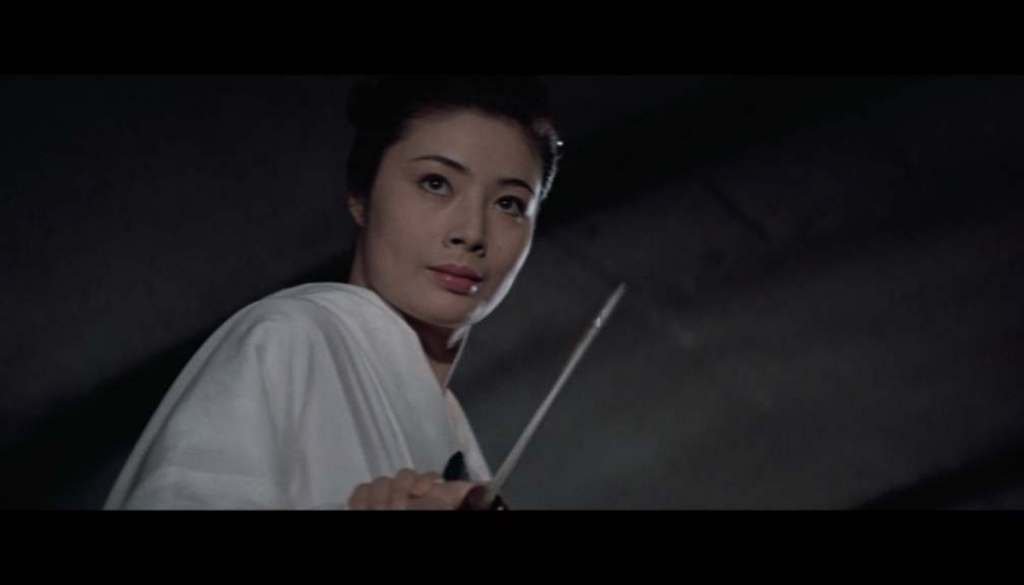Streaming Sleepers: The RED PEONY GAMBLER Trilogy From Film Movement Classics Is A Sure Win
I’m really fond of where my interest in film has taken me since I started this journey. I credit festivals for helping me open my eyes a little more, and now I can’t get enough of seeing classic kung fu, crime, and action out of boutiques like Arrow Video and even Film Movement which has been brimming its library up these days with throwbacks out of Japan.
Their latest addition comes by way of a franchise out of Toei, among which a trio is now available for streaming via digital and on-demand as the Red Peony Gambler trilogy. Actress Junko Fuji headlines the saga alongside a bevy of Toei’s talent roster – several with whom the actress shares a number of screen credits throughout her career, including Ken Takakura, Tomisaburo Wakayama, Bin Amatsu and others.
Kosaku Yamashita directs the 1968 first installment of these “ninkyo eiga” titles from a script by Norifumi Suzuki which chronicles the story of Ryuko Yano, the daughter of a respected yakuza boss. When her life of expectant marriage to a merchant is upended with the murder of her father, she disbands the Yano clan a few months later, and forges onward as a lone journeywoman gambler renaming herself, Oryu, as she seeks out her father’s killer.
The first film finds our heroine crossing paths with Katagiri after mitigating a card game in which the Takehana Clan gets caught trying to cheat. The resulting scrimmage finds Oryu cornered with Katagiri momentously passing by and staving off her attackers. A key moment happens in this scene that finds these two circling back to one another later in the film after Oryu reunites with her underling, Fugushin (Yamamoto) following a tiff that nearly brews into a war between rival clans.
Re-settling at her new home under the care of the Kumatora Clan led by their boss, Torakichi (Wakayama), the beautiful Oryu firmly places herself amid recurring conflicts among entities as a peacemaker, defying social norms with her intellect and wit, her gambling abilities, and her speed when combined with her fair use of a blade when the going gets rough. Little does Oryu know that her current path here soon reunites her with Katagiri, bringing her closer than she’s ever been to finding the man who murdered her father, resulting in an all-or-nothing confrontation that brings to question of whether or not she’s really ready to kill.
These events bring us to Red Peony Gambler 2: Gamber’s Obligation, with Oryu continuing her journey right then in the care of the Togasaki family. The local farmers are faced with a lingering threat as lonesharks have gripped town in their iron fist. Oryu’s instincts have already kicked in by the time the town’s intermediary and head of the Togasaki clan, Eisuke (Michitaro Mizushima), assigns Oryu to deliver a letter to Kumatora boss, Torakichi. When she realizes Togasaki’s real intentions, tragedy strikes and further endagers the town. With the help of two eager followers and a mysterious wanderer named Shutaro (Koji Tsuruta), Oryu’s next move will pit her squarely before Eisuke’s duplicitous enemies, further putting her resolve and the wilful code of the yakuza to the test.
The third and final chapter of the Film Movement Classics trio release sees our lethal and discerning heroine return in Red Peony Gamber 3: The Flower Cards Game. Tai Kato takes the director’s chair which takes off as Oryu arrives before the Nishinomaru clan to be taken in as a guest by the boss himself, Teijiro (Kanjuro Arashi). Upon learning of a mysterious woman who has been impersonating her to cheat at gambling venues, her investigation reunites her with the same woman, Otoki (Junko Toda) whose blind daughter’s life she saved at the top of the movie.
The plot thickens when Otoki becomes an unwitting pawn in a boss Kimbaru’s (Asao Koike) plot to extort Teijiro when a forbidden romance arises between Teijiro’s son, Jiro, and Kimbaru’s step daughter, Yaeko. As the Nishinomaru clan readies a forthcoming gambling event for the yakuza to raise money for the repair of Atsuta Shrine, Kimbaru’s next dastardly act culminates a brutal and violent arc of events that ultimately force Oryu’s hand in an all-or-nothing battle to bring balance back to the underworld.
There are eight films in the Red Peony Gambler saga which makes the three featured here by Film Movement Classics all the more enticing for anyone curious to hunt down films. Our lead actress definitely picks up on a few things as the saga progresses and we see her story evolve from place-to-place and person-to-person. Over the course of the three films, her character becomes more and more influential in the world she’s immersed herself since choosing to become a wandering gambler in a male-dominated world. She’s tastemaker who shakes things up by subverting traditions without trouncing on them, reading rooms, measuring humanity in others before acting, guided by her strong moral compass and a will that earns the respect of many a peer, and the ire of the most stubborn and vile of foes.
The latter here is especially important as Oryu must also become an increasingly skilled warrior with nothing more than her dagger, a pistol, and her speed at her disposal. The films aren’t the most action heavy which is a plus between essential moments of character and story development which lends purpose to the fight scenery and overall violence. Blood and gore are plain as day in several scenes between the films with the actors less formal in their movements than our lead actress, whose character moves with absolute grace and sharp coordination, a strong indicator of the work Fuji has put in to make Oryu into something truly iconic.
The franchise also sees a number of actors recurring throughout the films via reprisals or character additions, including Rinichi Yamamoto, Kyosuke Machida, Bin Amatsu, and Nijiko Kiyokawa, as well as late Toho and Toei veteran, Bunta Sugawara. The roster also includes the aforementioned Takakura who, by this juncture, had already begun affirming himself more in the cadre of Toei’s talent roster following the increasing success of the Abashiri Prison films.

Takakura appears in both the first and third films in different roles, and in both films he exudes the same level of charisma that wins him over with audiences virtually every time. His performance caliber speaks for itself, which effortlessly explains why this late legendary screen star remains one of the most memorable and celebrated to this day. He also gets to share a little screentime with fellow Abashiri Prison cohort, Arashi, in a scene in which they share a duel that contributes something extra rewarding to keep the story a little suspenseful as the climax approaches.
Wakayama is an incredible addition to the franchise as well, with a role that contributed something different and fun for me after only recently managing to catch up on the OG Lone Wolf & Cub films. His character, Torakichi, is absolutely smitten by Oryu. He’s stanned the lone gambleress since day one, and remains nothing short of loyal to her, even as his affection for her doesn’t necessarily match hers for him as something more familial. That loyalty definitely comes in hand when it can, which is indicative of just how ubiquitous that same level of cordiality and camaraderie stretches for her by even the most senior, respected bosses, much to the chagrin of some of their unsuspecting underlings. This aspect becomes especially clear early on in The Flower Cards Game when Oryu introduces herself to the reluctant Nishinomaru clan before Teijiro steps up to read a letter from Torakichi that Oryu hands him.

There’s a noticeable mix of studio and organic exterior shots in all the films, with set shots utilizing brilliant tones of lighting and color to convey sunsets and low sunlights for certain dramatic moments. The third film is certainly one of the most thrilling in terms of some of the action and where its shot, particularly with one fight scene midway in the movie which is filmed at night. Fuji is terrific to watch in action, and the steam-powered locomotive that rolls in the background, combined with the kind sharp, careful and inclusive cinematography that doesn’t try to overdo the task of making Fuji look good, adds a chaotic and exciting element to the scene in cohesion with the story.
As rare as these films are in the West and as obscure as these films have been for the better part of my life, I can only imagine how better the Red Peony Gambler movies get with each chapter. I read that at least two other films in this franchise connected to the third film are what actually make their own trilogy of sorts – I could be wrong of course, which makes it all the more pertinent that these films be made available to an audience that continually endures, even if its growth is limited to just a niche crowd. That labels like Eureka and Vinegar Syndrome, and as of late with Film Movement via their Film Movement Classics shingle have taken notice ought to mean something. Alas, here’s hoping that this is just the start. Film Movement has already begun stocking up on these titles for its banner which you can browse through on their official website.
Native New Yorker. Been writing for a long time now, and I enjoy what I do. Be nice to me!









